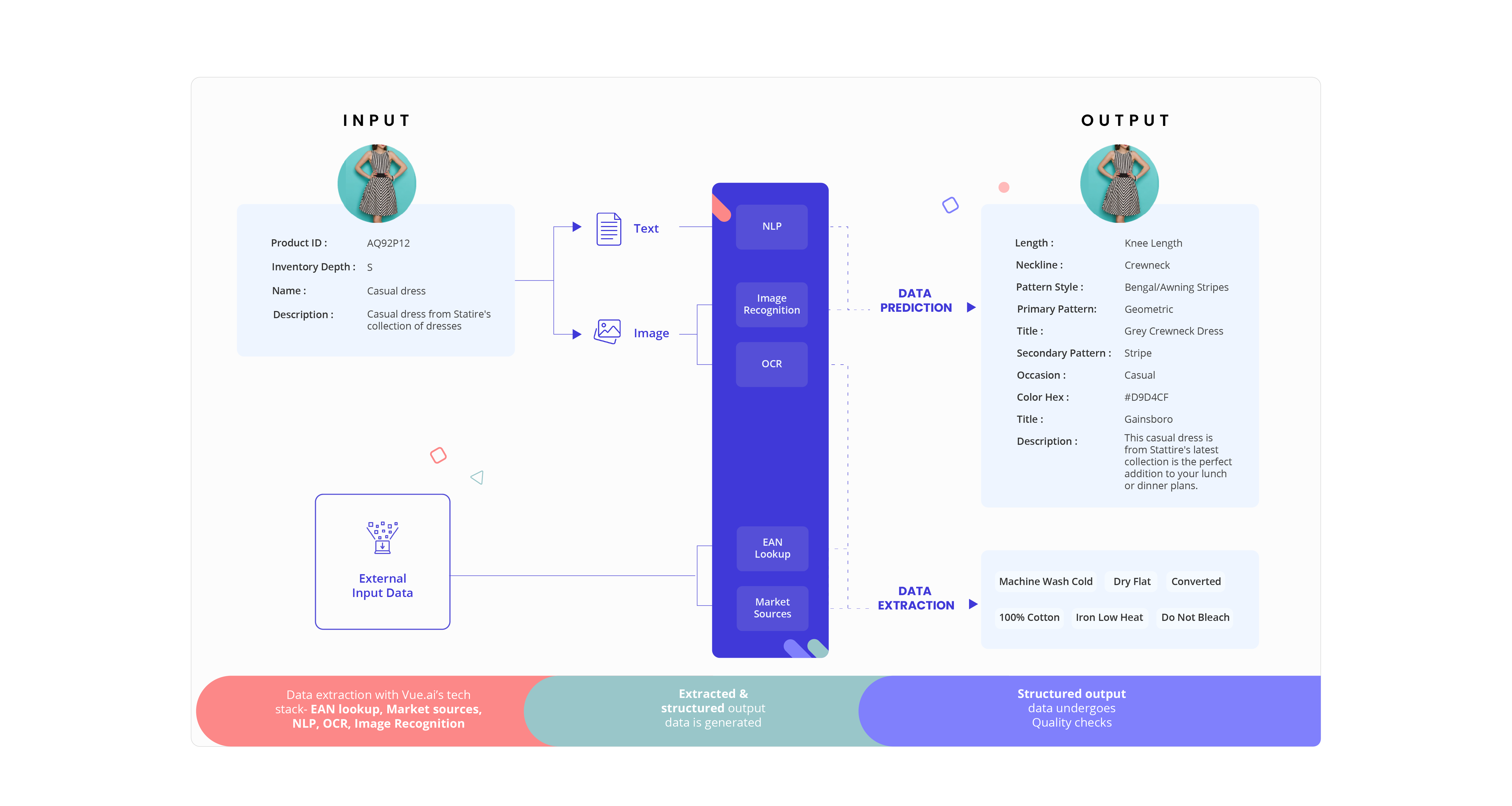PIM System’s Perfect Match Found4 min read
Reading Time: 4 minutes
In today’s fast-paced eCommerce digital landscape, where shopper’s touchpoints are multiplying and the demand for richer product data is at an all-time high, the role of data and analytics leaders has never been more crucial.
Picture this: eCommerce managers navigating through a web of systems containing data in silos, each system with its own complexities, but their mission is clear – to scale the digitization of product details seamlessly on their eCommerce website. This is where Product Information Management (PIM) companies show their powers.
PIM companies are an unsung hero of the eCommerce industry. They provide the backbone for a trusted source of product information from various other sources that fuel eCommerce businesses’ multichannel, multi-touchpoint shopper experiences.
How Generative AI can impact the PIM systems
According to Gartner, Generative AI is being hailed as the technology that will change the future of product information management (PIM) by automating and streamlining manual, repetitive tasks.
As we are aware, Generative AI is a form of machine learning capable of generating text, video, images, and other types of content by feeding in the necessary inputs for the machine to learn.
That said, many retail companies have started incorporating Generative AI into their systems to create and enrich product data for their eCommerce products. When it’s in the PIM system already, then it’s a full feast for eCommerce retailers.
Automated Product Data Enrichment
The data collected from various sources like ERP, MDM, supplier data, and product spreadsheets is in its rawest form. The input from these sources can be incomplete or basic. Basic product information can’t deliver the goods; it needs to be 100% reliable and rich for shoppers to make informed purchase decisions.
This is where manual data entry/enrichment kicks in, sometimes becoming a real challenge. Generative AI is an alternative for pulling and adding product attributes instantly. Using image recognition, it analyzes images to predict tags like color, fit, style, occasion, or category – perfect for visually oriented products like fashion apparel and furniture.
Text data that comes with products is another goldmine. For instance, a cereal product with a packaged list of ingredients can be extracted and enriched using data extraction tools like Optical Character Recognition (OCR) and Natural Language Processing (NLP).
The machine learning (ML) aspect of AI can create custom taxonomies or tags for products with niche attributes. The system can learn within a few minutes and apply that learning to generate new tags for products.

Automated Image Moderation
Similar to how product data originates from various sources, product images also come from different vendors, especially in marketplaces or multi-branded retail settings. These images may follow different guidelines and must align with the standards set by the marketplace.
No marketplace would want a website filled with blurry or improperly positioned images. eCommerce product clarity is crucial for shoppers to make informed decisions.
In this context, AI doesn’t generate content but plays a crucial role in detecting red flags within images to ensure they meet the marketplace’s guidelines.

As seen in the image above, images uploaded to the marketplace’s PIM undergo screening by Vue.ai’s image recognition systems. It assesses whether the images align with the marketplace’s guidelines and accurately accepts or rejects them in real-time. Accepted images can be used for online publication, while rejected ones require adjustments by the respective vendors.
Areas in the PIM system that could be improved using AI
Data Entry
Eases the process of creating new product data, allowing bulk creation of new SKUs, and enhancing accuracy and completeness upon data arrival.
Data Extraction
Automatically identifies and extracts vital product data from various sources like catalogs, supplier spreadsheets, websites, and third-party repositories. This includes attributes like product name, SKU, sizing, and ingredients, forming the core layer of eCommerce product data.
Data Cleansing
Cleans, standardizes, from multiple sources, and validates data, ensuring it meets predefined standards of the business.
Product Categorization and Classification:
Generative AI automatically categorizes products within the PIM systems based on attributes like product type, brand, material, size, and color. Over time, the AI model identifies patterns, enabling automatic categorization.
Syndication
Generative AI can also help in speedy integrations and establish connections between the PIM systems and data sources. This simplifies managing data intake and distribution across different taxonomies, potentially reducing costs and improving standards.
Enhanced product search and discovery
The enriched data will enable end shoppers to visually search for products using relatable simple keywords leveraging generative AI to analyze features of products and provide recommendations for similar or related products.
Conclusion
Using generative AI within PIM systems brings diverse and significant benefits to the system. The buzz around its potential to revolutionize how businesses handle and showcase products is undeniable. AI streamlines data extraction and organizing, saving time and delivering more accurate product search results. Automation of tasks like manual data tagging of eCommerce products frees up time for crucial activities.
As generative AI evolves, it signals a potential reduction in the volume of product data management processes. PIM systems, already addressing this, will become even more efficient when combined with generative AI.
